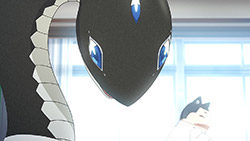 |
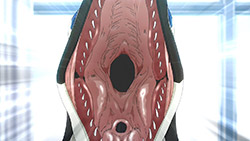 |
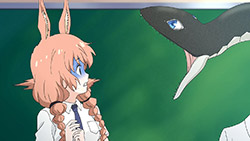 |
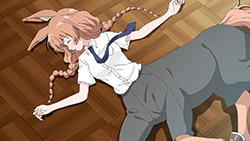 |
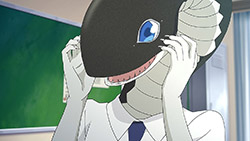 |
 |
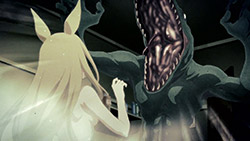 |
 |
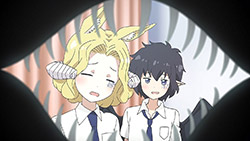 |
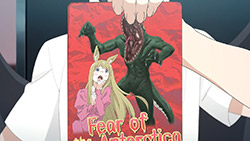 |
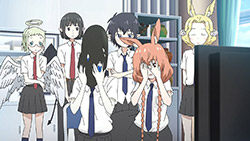 |
 |
 |
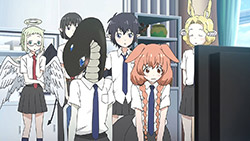 |
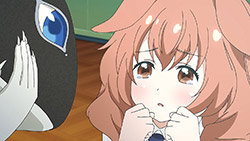 |
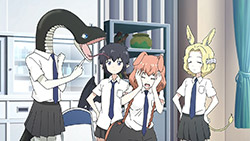 |
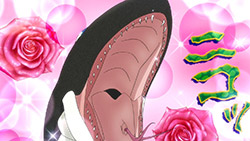 |
 |
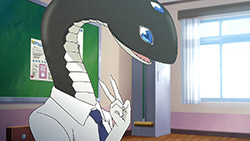 |
 |
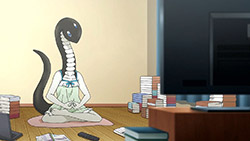 |
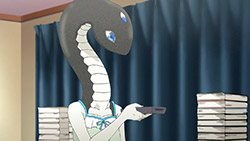 |
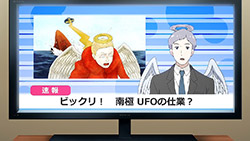 |
 |
 |
 |
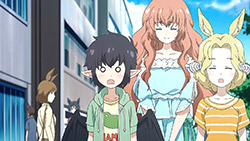 |
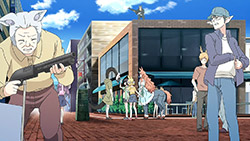 |
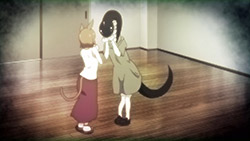 |
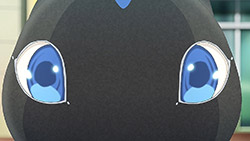 |
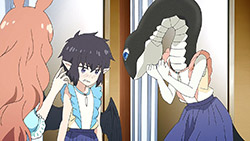 |
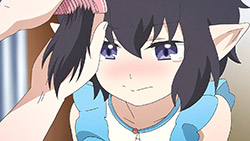 |
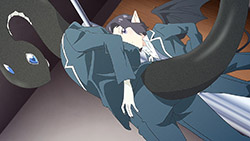 |
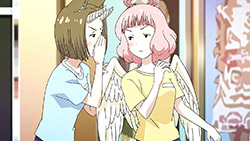 |
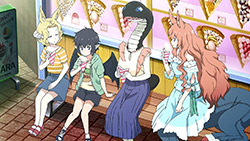 |
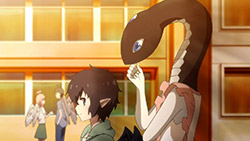 |
「南極人って噂が一人歩きしてるみたい. / でも, 結局, 南極人って歴史もルーツも謎だよね.」 (Nankyokujintte Uwasa ga Hitori Aruki Shiteru Mitai. / Demo, Kekkyoku, Nankyokujintte Rekishi mo Roots mo Nazo Da yo ne.)
“Antarcticans Are Like Walking Rumors. / But in the End, the Antarcticans` History and Roots Are a Mystery, Too.”
We finally have a formal introduction for our newest student, Sassassul this time around, and she’s absolutely charming. Not only is she incredibly cute, but also has a mature, refined voice that matches well with her studious and level-headed personality. It’s neat to see her deal with the hardships that come with being an Antarctican snake woman cooly despite odds stacked up against her race. As an Arab American, it’s easy to relate to having to forced to explain yourself on behalf of your ethnicity for people and classmates who didn’t know better. It gave me a warm feeling to see Sassassul explain the facets of snake people to her class without getting bitter or fed up with it like I did. Even if no one really learns from things like this and just walk away with the conclusions they had when they first asked how your race/ethnicity does this and that, it shows a level of maturity in Sassassul’s character to remain calm yet cautious about what conclusions people draw from her heritage.
While the episodes that came before only devoted small portions of the run time on delving into race relations, a majority of this one focuses heavily on how society coexists with snake women despite the degree of prejudice that is acceptable against snake people. In an ironic twist for a society that stresses total equality, Himeno’s fear of snake people and Sassassul is derived from a classic horror film with a racist agenda to transform snake people into body-shifting predators (On a seperate note, who the hell watches a freaky, gory movie like that with their little kid?). It’s astute for the series to have Sassassul think critically of the media she consumes throughout the episode as she reflects on the action movie she watched with her friends and walks Himeno through everything the old horror movie got wrong about snake people. It’s one thing for the racial implications of the universe’s media to just show up for the viewers to dissect, but it’s another for some of the characters like Sassassul and Kyouko to be increasingly aware of the limitations that a society like this could have for civil rights.
It’s also interesting how the series in general handles the role that media consumption plays in racial identity. The formation of prejudice through pop culture and media condemnation of snake people mirrors how much of our real world perceptions of race and hostility can come from mass media. This particular episode goes beyond just the historical context of race in cinema, and approaches how anyone can run into a series of racialized messages just through the act of channel surfing. As Sassassul combs through TV, the commercials she stumbles across are for products that would be incompatible for snake people like beauty supplies fit for human-like skin and such. Whereas people with darker complexions don’t have the same issues as people with snake skin, it’s hard to find beauty products that apply well to darker skin in your average department store.
On an overt level, this episode explores TV news coverage on terrorist attacks and crime with Sassassul becoming more heavily guarded after an Antarctican attack on an American boat. Even from a distance, there is still tension in Sassassul’s presence in public as people are on-edge both from the possibility of being attacked and the possibility of someone committing a hate crime on her. The news of the attack is spread throughout every screen in town to solidify the double bind of whether they want to truly be a bastion for equality or promote discrimination and prejudice against exotic races. Again, this is an easily relatable situation that I’m very familiar with, only with the “Please don’t be ____, please don’t be ____,” mantra in my head to ward away whatever prejudiced jumps to conclusion people arrive at. It’s easy for me to blend in, but the more I explain myself, the deeper hole is dug in people tying my ethnicity to whatever popular news story demonizes said ethnicity.
It’s continually selfish of me to apply a Western context to this series, especially since the series comments on Japan’s issues with immigrants from surrounding countries, but it’s hard not to relate the diverse yet regressive society in Centaur no Nayami with the political landscape in America and the West. The double bind of whether to truly be a nation of freedom and equality or make the playing field more advantageous for those who aren’t in the minority is something that occurs within both sides of the aisle. It’s more obvious to see where right wing politicians stand on which race should reap the least benefits, but more centrist left wing politicians are prone to using the idea of racial unity as a platitude used to shut people up when they want to acknowledge the rampant inequality. Despite the tug-of-war between liberals and conservatives, there’d be some shared unity between the All Lives Matter folks on the right and the I Don’t See Race folks or those who aggressively push for solidarity on the left in using absolute equality as a way to avoid the discomfort of approaching different races or discussing how difference affects how the law, media, and public sees specific races. It has a similar bearing on Centaur no Nayami‘s universe where much of the obvious racism is discussed in hushed tones or internal thoughts, but the prejudice is felt more clearly in the ambivalence it shows towards how snake people should be seen or treated.
Apologies for bringing too much politics into the episode review, but Centaur no Nayami is the most impossible series to discuss without diving too deep into its political commentary. And to me, I feel like it’s better for it because it does stimulate some discussion on what bearings race has in society. Much like how Sassassul wants to watch the horror film as a way to enjoy and critique its qualities, the show’s messages can be embraced fully or taken with a grain of salt. Nonetheless, I’d like to thank you for your patience as we move further into the anime and examine how it approaches the topic of race. I do hope, however, that we’ll get some more cute SOL scenes with Sassassul where things’ll be easier for her.

Ha, I thought exactly the same in that scene! I can understand that, for their parents, the film was just a cheap production that nowadays doesn’t scare any adult (the point Himeno’s friends make), but once the little kid starts crying, they just smile and act as if there’s no trouble at all. That seemed weird.
I think the case of the Antarcticans also explored the blurred lines between race and nationality. Like how this fictional Japan and (most likely) the USA are “human” multirracial societies, while Antarctica seems to be inhabited only by snake people. Which explains some situations in this episode:
-Sassassul is worried that what happened to the American boat might make people in Japan hate her, and cites shared race (they’re all “humans”) as a reason, yet from the point of view of these Japanese teenagers the political tensions between USA and Antarctica are a matter that has nothing to do with them. Like how sharing Western values, culture and alliances doesn’t mean that Europeans and Americans see things the same way.
-A film that blatantly demonizes snake people appears relatively frequently on TV despite all the laws and regulations to promote equality between races. Ah, but which races? The ones that seem to have had a long presence in Japan. Snake people seem to face not only discrimination as “members of a different race”, but also as “foreigners”, which has made them a seemingly valid target for rumours and conspiracy theories that I suspect wouldn’t be acceptable with other races.
And I agree, one of the beautiful things of Centaur no Nayami is looking for the political and social content in each episode.
Some parents are chill with their kids watching movies they have a hard time handling, but in my upbringing, there was a no-tolerance policy on it. As soon as I freaked out about the Shang Tsung skull-face in the beginning of the first Mortal Kombat movie, mom returned the VHS even when I cooled off when the scene ended. It took months of begging to see Men in Black and The Mummy in theaters, even if the latter got me good. I think the main difference is that those were movies I was excited about. The Fear of Antarctica seems like dad’s kind of movie, and Himeno is just being told to sit there and watch while the movie’s still going and the dad’s just ignoring them as he cruises through the snake person visibly swallowing and skinning a centaur whole. It’s the dad just chilling out on the couch or the mom being fine with the movie playing as Himeno’s freaking out that was the weirdest part of the story.
True, I appreciate the perspective the show goes as far as how deep it goes into political and social commentary to start a conversation. It’s a great point that for all the laws and regulations for equality, the snake person discrimination is acceptable enough for the horror movie to be broadcast on TV regularly. Where there are acceptable targets despite being strict about how far a person goes with expressing their prejudice.
Himeno’s father is an inesnsitive lunkhead about certain things. He thought the movie was hilarious (the manga chapter for this had him laughing about how campy it was while Hime was screaming and cowering), and so the idea that it might be traumatizing to a child didn’t even enter his mind.
@Wanderer
Ah, thanks, that explains a lot. So it’s as I thought and the parents considered the film harmless because of how tacky it was.
However, conspiracy books involving Antarticans are illegal and censored, and showing unease around an Antartican can have one sent to re-education camps.
That a film that has actually made one person have an irrational fear of snake people is available, has been aired often on TV and has even a remake, while crazy conspiracy books are banned is the kind of stupid irony that I would expect in real life too XD
I always loved how this series actually intended to talk about it’s world (like relations between the races etc.) but used the proxy of the slice of life genre. Absolutely love this anime. Never thought I’d love it so much because when I saw the preview it couldn’t interest me in any way.
I always loved how this series actually intended to talk about it’s world (like relations between the races etc.) but used the proxy of the slice of life genre. Absolutely love this anime. Never thought I’d love it so much because when I saw the preview it couldn’t interest me in any way.
It is worth noting that this is merely a suspected Antarctican attack. Antarcticans travel using planes and ships made/provided by other countries, so no one knows what their own vehicles and technology look like. The ship was attacked by an unidentified flying object in Antarctican waters, so of course the first people they suspect are the Antarcticans whose territory that is, and whose technology is unknown, but they do not actually know that.
Still, your points are valid: if people are hearing something bad on the news and relating it to her people, they’re more likely to be suspicious/distrustful/hateful towards her, even though she as an individual had nothing to do with whatever it is they heard about. Sassassul is lucky that the attack was on a foreign vessel, so the average Japanese citizen would likely glance at the news story, think “Huh. Well, that sucks,” and go on about their business rather than getting riled up about it.
Interestingly, when Kyouko tried to make that point to support Sassassul, the snake girl had to keep herself from babbling too much about the means the Antarcticans have to protect themselves, even adding that she “can’t say any more than that”. Ironically, that actually supports the conspiracy theories and America’s claims that the Antarctican government has secret weapons to deal with intruders that they don’t want anyone to know of.
Reminds me of the previous episode. One of the theories about UFOs is that they’re Antarctican vehicles. Nobody believed Nozomi when she claimed to see one, but then an Antarctican girl of some importance arrives to the school shortly after. Coincidence? (I don’t really know, I don’t follow the manga).
True, if the meat of the news story is the speculation on whether it’s Antarctican technology, it would help stoke the flames for people to draw their own conclusions based on what society says about them.
As for the last point, my main assumption was that there would still be a sense of paranoia even if it was away from Japanese land. The public wouldn’t be as aggressive, but they’d still react with the fear it could happen to them. It would go hand-in-hand to the American reactions to European terrorist attacks where its far away from us, but there’s still that call-to-arms to stay vigilant against whichever race or ethnicity caused or might’ve caused it.
Interesting to note, the manga identified the President of the United States as a Black centaur, while the anime adaptation now shows the President of the United States as a blond haired angel-folk.
Staff likely keeping up with current political times and change in real-life presidents.
I really wish they’d toned back some of the big brother themes because they’re really getting to be a buzz kill that just slams the breaks on the shows flow.
A cute dress up scene? Followed up with one of the stores clerks being warned she’ll be sent for “reeducation” if she doesn’t tailor clothes for someone.
A cute tsukkomi bop on the head? Followed up by at least three armed government agents making a snap decision to not shoot and/or arrest one of the main characters for inter-species assault.
The Orwellian themes accelerate the most in this episode because society is relatively up-in-arms against snake people, and the laws give them all the tension over whether to act on any prejudices or stop any prejudices from occurring so they can avoid incarceration. In a way, it does link towards the hyper-vigilance about discussing race negatively, but it also shows how it doesn’t exactly stop people from thinking how they think about different races.
It does give the show a different feel though, and it can be jarring when they shift between cozy and oppressive. Where there’s cute high school antics with monster girls, and then there’s government suppression of any daily activities that can be construed or misconstrued as wrong. This might be the first episode though where the latter takes up a bulk of the run time, but with the full introduction of Sassassul, it is to be expected.
https://randomc.net/image/Centaur%20no%20Nayami/Centaur%20no%20Nayami%20-%2005%20-%20Large%2002.jpg
…Killer smile…
So Sassassul is a different species than the humans… interesting evolution change. And in this world, there is ANOTHER species that can talk and is intelligent!? Sign me up! Maybe it will birth another anime fetish.
I was initially taken aback by all the people armed at the ready in case they’re witness of any public abuse, but then I remembered it was because Nozomi bopped little snakey foo-foo on the head, and she had no heart feelings about it. She’s really gracious and forgiving to everyone getting the wrong idea of her!
How come that school faculty member cannot enter the classroom?
That’s the thing about monster shows; somewhere along the way, a new fetish is unlocked.
It’s great that Sassassul is very level-headed because she seems to know how to help people understand how snake people are actually like and how to protect those around her from getting in trouble. Like diffusing the situation when Nozomi bops her for drawing more attention to herself with her bandana.
I think the faculty member was one of the government officials who have to overlook in the distance in case there are any infractions to the law. I’d imagine there are standards against them entering due to the push to make their surveillance feel like it’s less like breathing over the students’ shoulders.
orochimaru would tap that
Wonder how many Antarctican snake girl magazines he has hiding in his bedroom?
Correctional facility? How Orwellian!
https://randomc.net/image/Centaur%20no%20Nayami/Centaur%20no%20Nayami%20-%2005%20-%20Large%2034.jpg
Ep 06:
Autsch!. The Class President are an forcefully grown Mother… That lost her innocent “youth” to be the Mother… The Word and calmness she speaks up to her Dad. That would be an married couple, taken care of the family future.. She is not a kid anymore, thats for sure
What she said? sorry, you should hear it for yourself. The calm voice give me the chills… Very well done Seiyuu